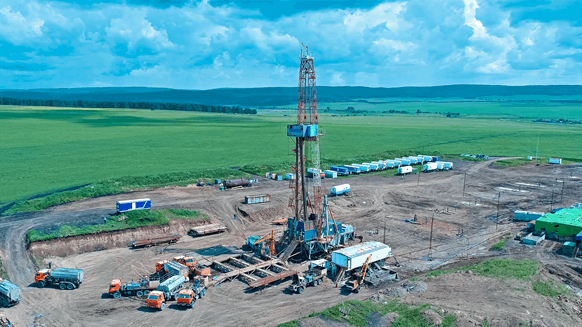
Santos Ltd said it achieved a major milestone at its Pikka phase 1 project with the arrival of key processing modules by barge at Oliktok Point, Alaska.
The remaining processing modules are being mobilized from the Pacific Northwest and are scheduled to arrive at the site this month, Santos said in a news release. The seawater treatment plant (STP), fabricated in Batam, Indonesia, is also currently on tow to Alaska.
The processing modules and STP will be installed, integrated and then commissioned together with existing facilities in preparation for first oil production expected in 2026, Santos said.
The modules were brought from the Hay River Marine Terminal in Canada, transiting 1,086 miles along the Mackenzie River system to Tuktoyaktuk in the Beaufort Sea, and 380 miles via sea barge from Tuktoyaktuk to Oliktok Point, according to the release.
Santos Managing Director and CEO Kevin Gallagher said, “Our highly capable team that delivered early completion of the pipeline in just two winter seasons followed by a successful river-lift of key processing modules, has created the opportunity for early startup and production from Pikka”.
Gallagher noted that Pikka phase 1 is almost 90 percent complete and the company is currently drilling its 21st well.
“The Pikka project together with the Barossa LNG project are expected to deliver around a 30 percent increase in production by 2027. These two world-class projects are expected to set the company up with long-term, stable cash flows to support both returns to shareholders and investment in future production growth,” he added.
The Pikka phase 1 project includes a single drill site, an oil processing facility, and other infrastructure to support production of 80,000 barrels of oil per day, according to the company’s website.
In August 2022, Santos, as operator of the Pikka Unit joint venture, said it had taken a final investment decision (FID) on the oil project located on the North Slope of Alaska.
The Nanushuk play in the Pikka Unit represents one of the largest conventional oil discoveries made in the USA in the last 30 years, and the Pikka Phase 1 project is the most significant development on Alaska’s North Slope in more than 20 years, according to the company. Pikka has low emissions intensity, placing it in the top quartile of oil and gas development projects globally for greenhouse gas emissions performance, the company said.
Santos has entered into memorandums of understanding with Alaska Native Corporations to deliver carbon offset projects, including a Strategic Alliance with ASRC Energy Services, a subsidiary of Arctic Slope Regional Corporation, on leading technology development for carbon solutions in the Arctic.
The project has strong fundamentals and is located in an oil-producing province with significant existing infrastructure, has low unabated emissions intensity and is supported by key stakeholders, including the State of Alaska, the North Slope Borough, the landowner company Kuukpik Corporation and the Arctic Slope Regional Corporation, according to the company’s website.
Source: By Rocky Teodoro from Rigzone.com
